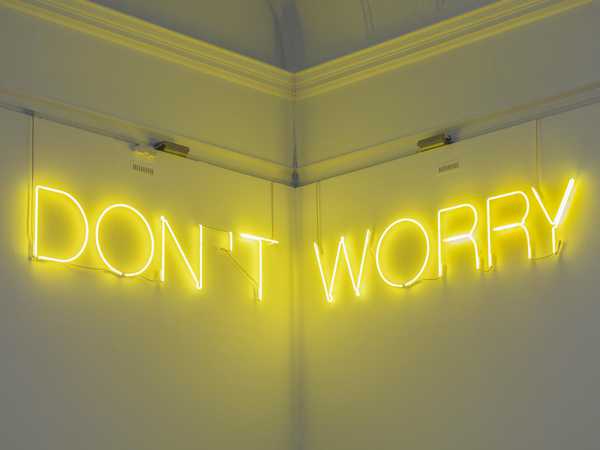Line describing a cone
1973 - Film & Video (Film & Video)
30 min
Anthony McCall
The film Line Describing a Cone was made in 1973 and it was projected for the first time at Fylkingen (Stockholm) on 30 August of the same year. This piece, which was initially screened in independent film contexts, it soon began to be shown at art museums and ended up becoming one of the key works of the artistic movement that opened up the visual arts towards cinema. With a duration of 30 minutes, the film shows the creation of a white curve being projected onto an empty space. A thin mist is introduced into the projection area, therefore the viewer can progressively see (more than a circle reflected on the wall) a large cone of light which simultaneously becomes a light sculpture into which he is invited to circulate. By allowing the viewer to immerse himself in it, and play with this strange substance, Line Describing a Cone becomes not only something made to be seen, but also something to be experienced since the viewer is absorbed into the scene and becomes part of the action. In this way, McCall recreates an inversion: by placing the public facing the projector, he reveals the entire process of kinematics and, at the same time, he destroys any possibility of illusionism, in order to create another, that of magic, poetry and wonder.
Since the 70s, the British artist Anthony McCall has continued to push the boundaries of art. Exploring the boundaries between cinema and sculpture, he uses light and time as his signature materials. His work spans across drawing, installation, and performance, one of his preferred mediums. McCall is a key figure of British avant-garde film from the 70s. His first films retrace his outdoor performances. Experimental film in 16mm is one of his main mediums that he uses in confrontation with sculpture and performance. McCall is an indispensable reference to a younger generation of artists working in video and installation in England and abroad. Anthony McCall was born in Great Britain in 1946. He lives and works in New York.
Colors:
Related works featuring themes of: » British

© » KADIST
Keith Tyson
The work of Keith Tyson is concerned with an interest in generative systems, and embraces the complexity and interconnectedness of existence...

© » KADIST
Ryan Gander
2012Epiphany…learnt through hardship is composed of a bronze sculpture depicting the model of the little dancer of Degas, in the pose of a female nude photographed by Edward Weston (Nude, 1936) accompanied by a blue cube...

© » KADIST
Chris Wiley
2012Architectural details become abstracted renderings in Chris Wiley’s inkjet prints 11 and 20 (both 2012)...

© » KADIST
Martin Creed
2003This photograph of Martin Creed himself was used as the invitation card for a fundraising auction of works on paper at Christie’s South Kensington in support of Camden Arts Centre’s first year in a refurbished building in 2005...

© » KADIST
Ian Wallace
2000Untitled (Breathless) presents a folded newspaper article on Jean-Luc Godard’s À Bout de Souffle (Breathless)...

© » KADIST
Chris Wiley
2012Architectural details become abstracted renderings in Chris Wiley’s inkjet prints 11 and 20 (both 2012)...

© » KADIST
Martin Boyce
2003In the installation Our Love is like the Flowers, the Rain, the Sea and the Hours, Martin Boyce uses common elements from public gardens – trees, benches, trashbins– in a game which describes at once a social space and an abstract dream space...

© » KADIST
Toby Ziegler
2007Wagon Wheel is a work with a fundamental dynamism that derives both from the rotating movement of the elements suspended on poles and the kicking of the legs of the figure...

© » KADIST
Jonathan Monk
2003Untitled (rolled up) , is an abstract portrait of Owen Monk, the artist’s father and features an aluminum ring of 56.6 cm in diameter measuring 1.77 cm in circumference, the size of his father...

© » TATE EXHIBITIONS
Martin Creed
Martin Creed | The Dick Institute Experience the work of one of this country’s most ingenious, audacious and surprising artists at the Dick Institute ARTIST ROOMS Martin Creed presents highlights from the British artist’s thirty-year career...

© » KADIST
Toby Ziegler
2005The Fifth Quarter might have taken its mysterious inspiration from the eponymous Stephen King story collated into the Nightmares & Dreamscapes collection...

© » KADIST
Simon Starling
2007Invited in 2007 to the Museum Folkwang in Essen (Germany), Simon Starling questioned its history: known for its collections and particularly for its early engagement in favor of modern art (including the acquisition and exhibition of works by Cézanne, Gauguin, Van Gogh, Matisse), then destroyed during the Second World War, the museum was pillaged for its masterpieces of ‘degenerate art’ by the nazis...

© » KADIST
Rosalind Nashashibi
2019Rosalind Nashashibi’s paintings incorporate motifs drawn from her day-to-day environment, often reworked with multiple variations...







